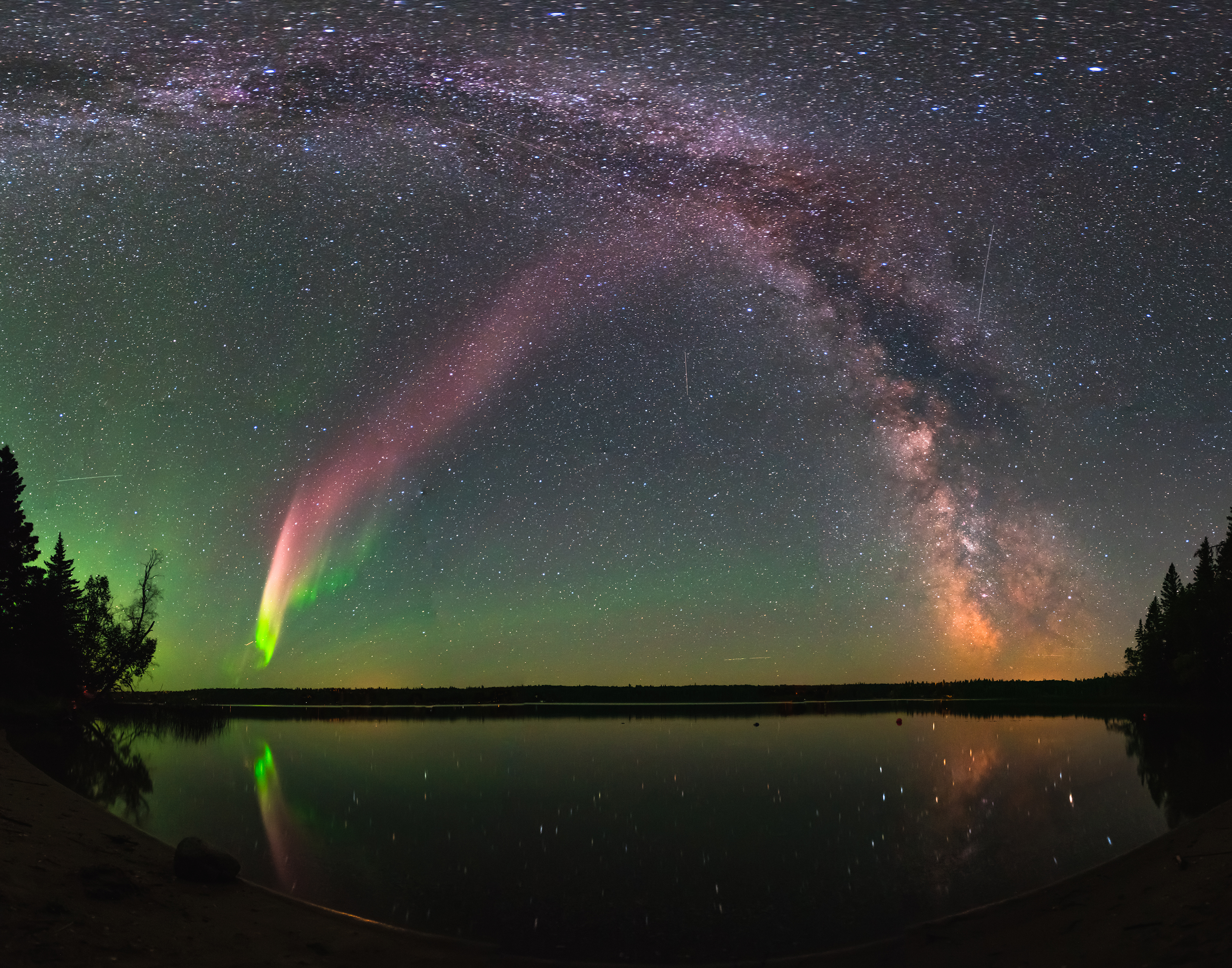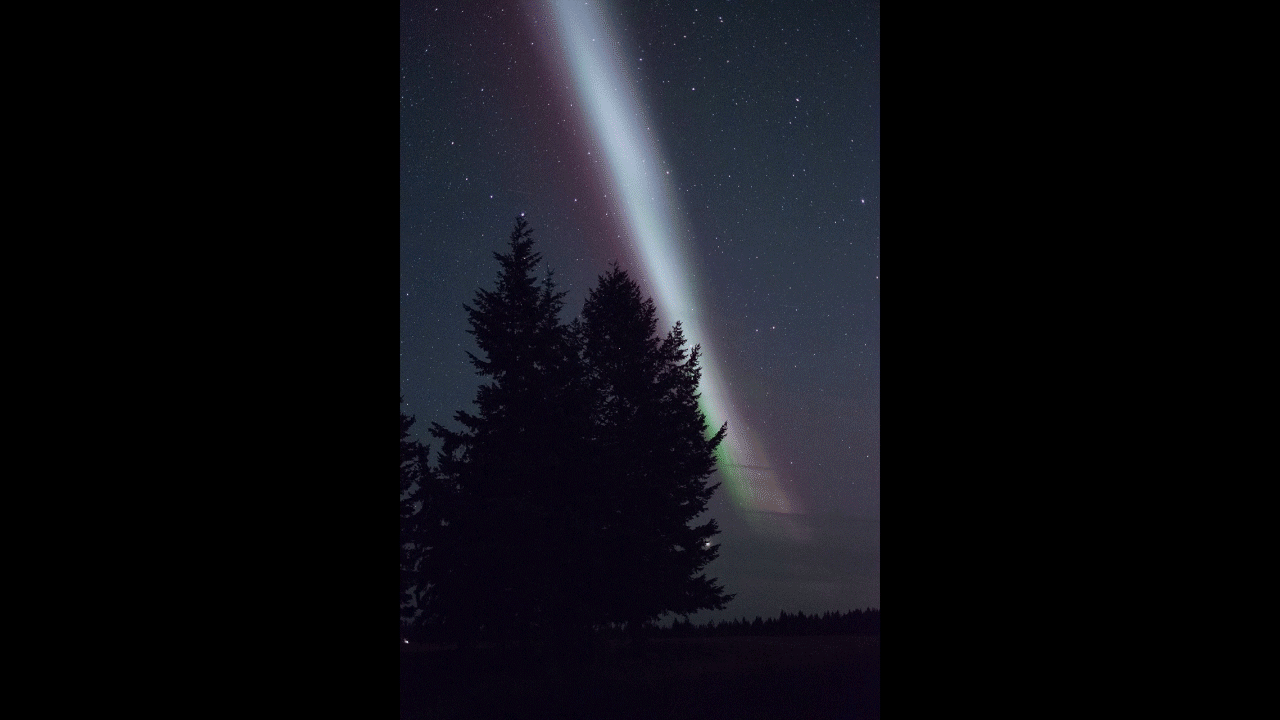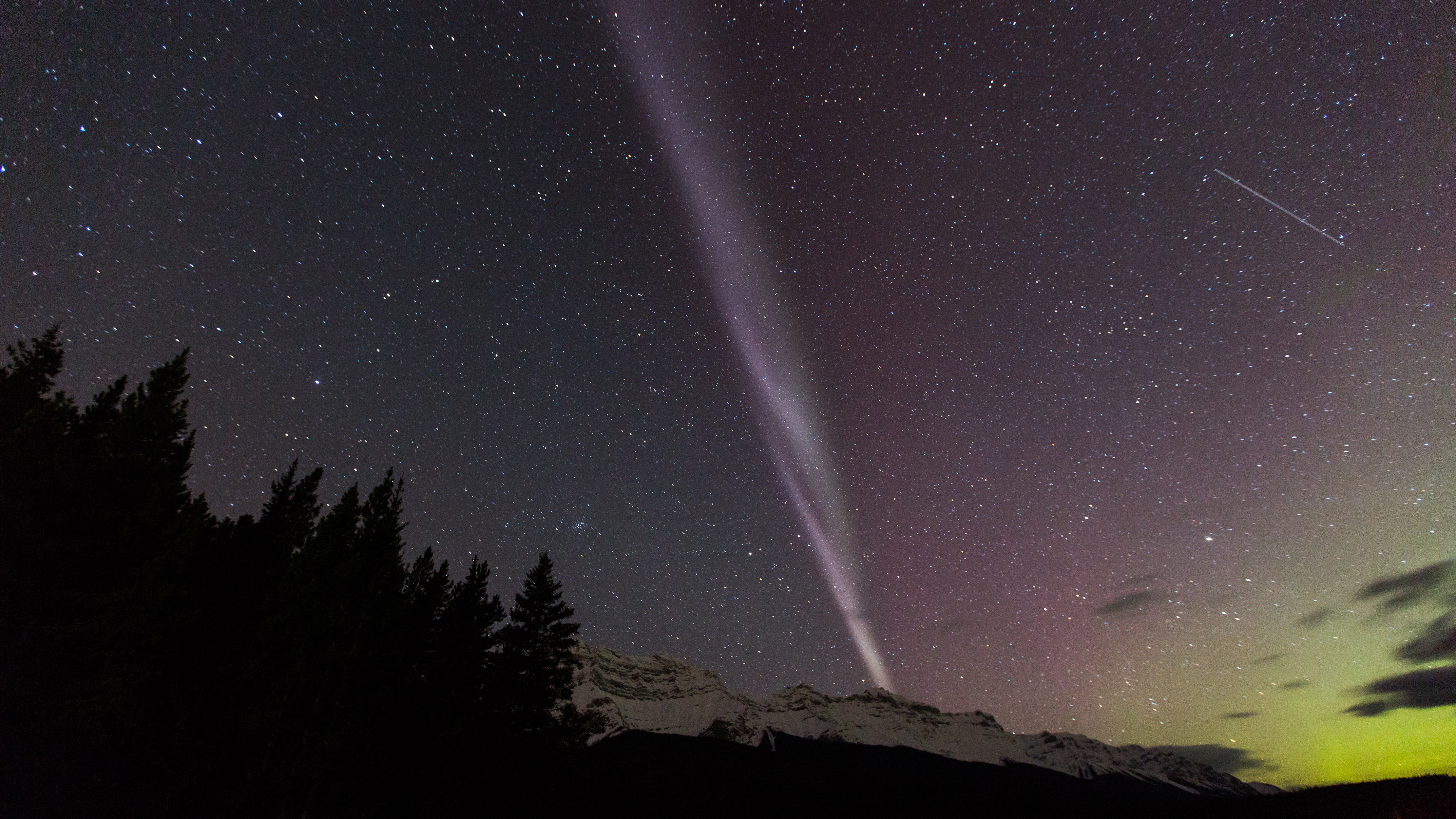Meet 'Steve,' the Aurora-Like Mystery Scientists Are Beginning to Unravel
New work helps to codify the cause and properties of "Steve," an aurora-like phenomenon documented by citizen scientists as it streaked across the sky in western Canada.
As of a new paper's release today (March 14), the phenomenon has been dubbed STEVE, a backronym that matches the name originally given by aurora watchers. (STEVE is short for "Strong Thermal Emission Velocity Enhancement.") According to the new work, the distinctive ribbon of purple light with green accents — which can occur at lower latitudes than normal auroras do — gives scientists a glimpse into the interactions of Earth's magnetic field and upper atmosphere.
"It's exciting because this might be a kind of aurora that more people can see than any other kind, because when it shows up, it shows up over more populated areas that are further to the south," Elizabeth MacDonald, a researcher at NASA's Goddard Space Flight Center in Maryland and lead author of the new work, told Space.com. And scientifically, "it's an aspect related to [auroras] that's further south than we ever had recognized … It tells us that the processes creating the aurora are penetrating all the way into the inner magnetosphere, and so that's a new aspect of it." [Amazing Auroras: Photos of Earth's Northern Lights]

Researchers first became aware of STEVE after members of a Facebook group called the Alberta Aurora Chasers (which refers to the province in western Canada) began posting photos of unusual purplish-greenish streaks oriented nearly vertically in the sky. Scientist collaborators coordinated with the aurora chasers to combine the dates and times of the phenomenon's appearance with data from the European Space Agency's Swarm satellites, which precisely measure variation in Earth's magnetic field, to work out what conditions caused the phenomenon.
The better-known auroras — also referred to as the northern and southern lights — form when Earth's magnetic field guides charged particles propelled from the sun around the planet and toward the upper atmosphere at its poles. These solar particles hit neutral particles in the upper atmosphere, producing light and color visible in the night sky.
STEVE, on the other hand, seems to form a different way.
Get the Space.com Newsletter
Breaking space news, the latest updates on rocket launches, skywatching events and more!
"There's an electric field in those regions that points poleward and a magnetic field that points downward, and those two together create this strong drift to the west," MacDonald said. The flow in Earth's ionosphere pulls charged solar particles westward, where they hit neutral particles along the way and heat them up, producing upward-reaching streaks of light moving west.

STEVE is the first visible indicator of that ion drift, which researchers had been investigating via satellite for around 40 years, she added.
Because the phenomenon was occurring outside the usual geographic range for frequent auroras, citizen scientists played a particularly valuable role in understanding STEVE, MacDonald said. It's at the farthest reaches of dedicated scientific cameras, and it appears on wavelengths different from the usual auroras, which those cameras might not be prepared to document. And the improvement in camera technology available to the public means such records are increasingly valuable to scientists' understanding of auroras in general. (Plus, crowdsourcing platforms like Aurorasaurus, which MacDonald founded, help aggregate the observations to help with prediction and analysis.)
Scientists understand a lot about auroras, but not everything — "so there's the discovery aspect," MacDonald said. "And there's the less-exciting aspect of the citizen science observations," which are equally scientifically valuable. "All these observations in aggregate help us to build better models of aurorae," she added. "That's useful for people who want to see it, and it's also useful for people who are concerned about the effects of space weather and currents in the upper atmosphere on communication and things like that."

It's hard to get an overall view of auroras with the current slate of satellites, MacDonald said, which either can't see an entire hemisphere or don't observe each spot often enough as they orbit — once every 90 minutes — to track how auroras evolve in the short term. People on the ground can provide a more nuanced view.
"Through these kinds of projects, we can get more people than we would have thought — than they would have thought — who actually have captured a scientifically valuable observation," she said. "And it's not scary; it's just STEVE."
The new work was detailed today (March 14) in the journal Science Advances.
Email Sarah Lewin at slewin@space.com or follow her @SarahExplains. Follow us @Spacedotcom, Facebook and Google+. Original article on Space.com.
Join our Space Forums to keep talking space on the latest missions, night sky and more! And if you have a news tip, correction or comment, let us know at: community@space.com.

Sarah Lewin started writing for Space.com in June of 2015 as a Staff Writer and became Associate Editor in 2019 . Her work has been featured by Scientific American, IEEE Spectrum, Quanta Magazine, Wired, The Scientist, Science Friday and WGBH's Inside NOVA. Sarah has an MA from NYU's Science, Health and Environmental Reporting Program and an AB in mathematics from Brown University. When not writing, reading or thinking about space, Sarah enjoys musical theatre and mathematical papercraft. She is currently Assistant News Editor at Scientific American. You can follow her on Twitter @SarahExplains.









